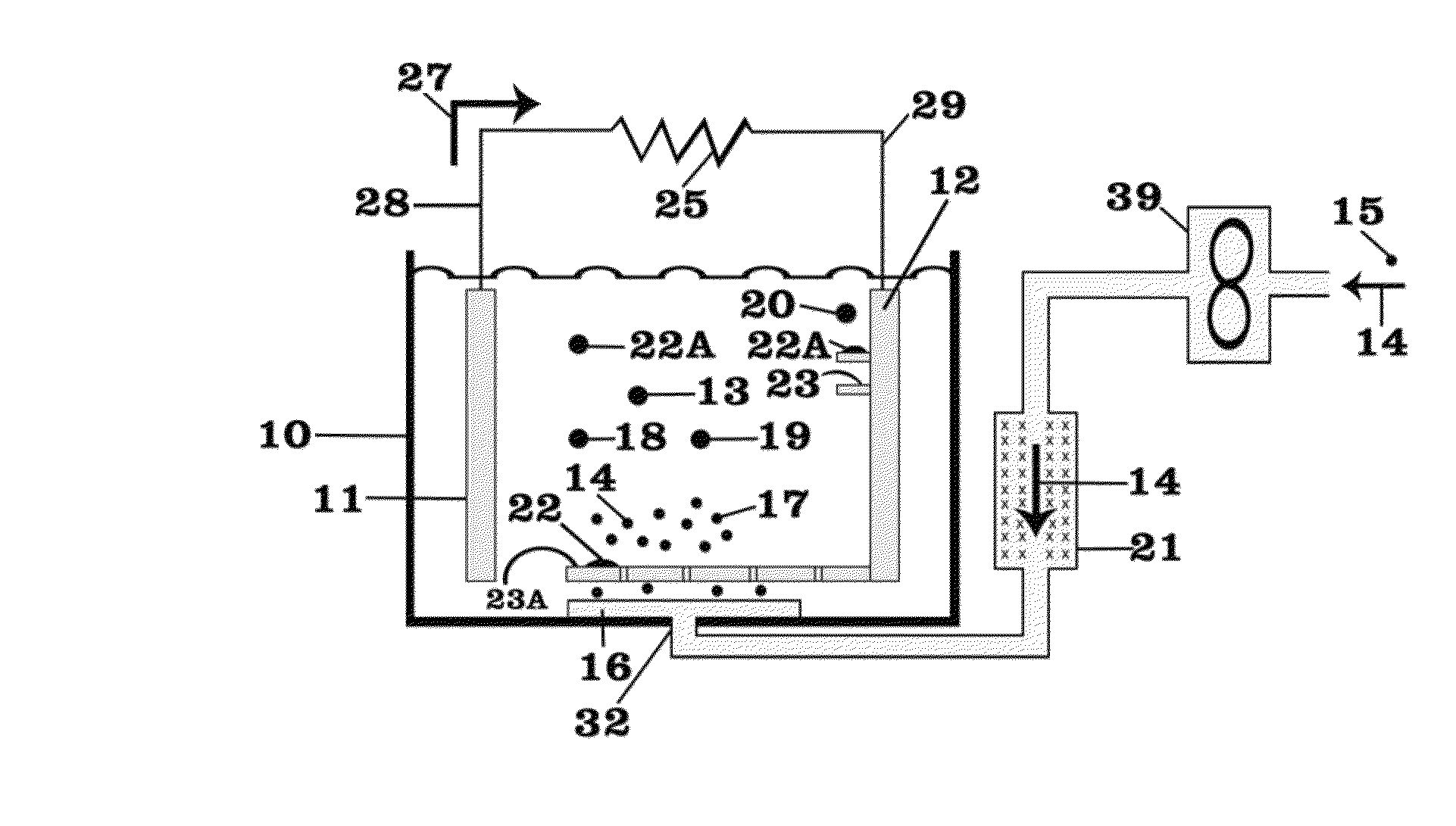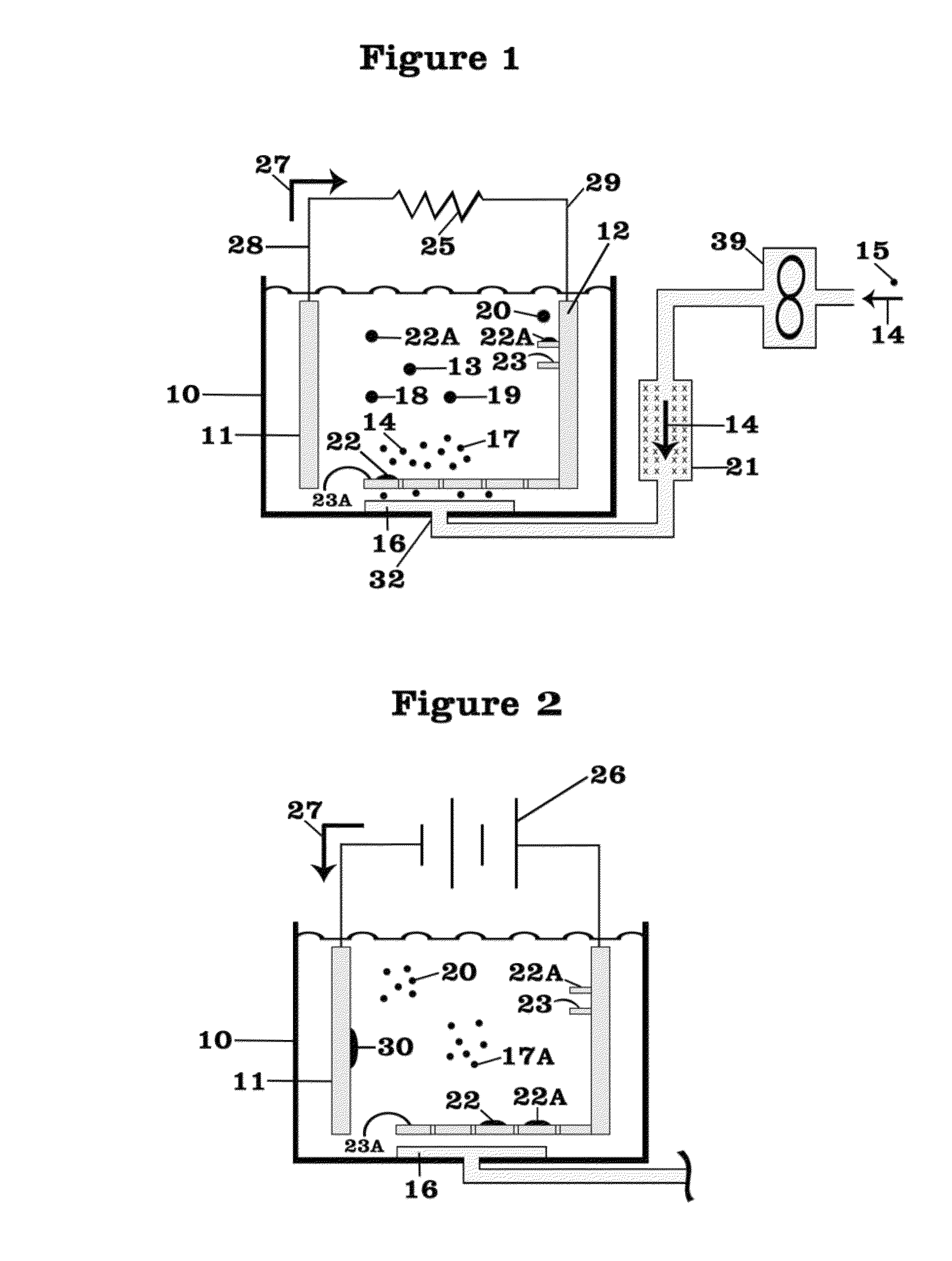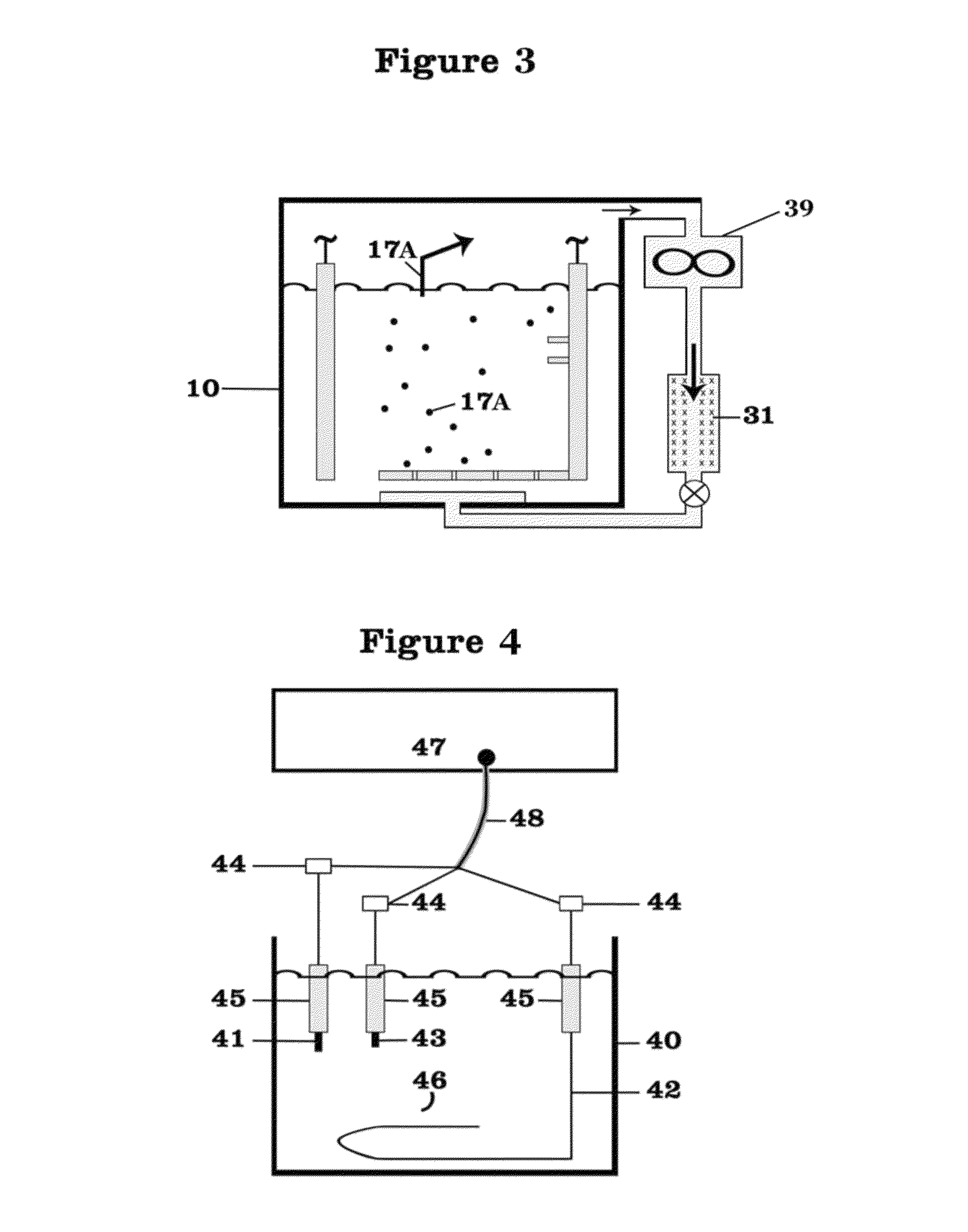Rechargeable lithium-air and other lithium-based batteries using molten nitrates
a lithium-air and other lithium-based battery technology, applied in the field of rechargeable batteries, can solve the problems of obstructing some electrode regions, blocking further oxygen reduction, and reaction not persisting in performing at optimal levels, so as to achieve low moisture content and minimize the amount of water in the electrolyte
- Summary
- Abstract
- Description
- Claims
- Application Information
AI Technical Summary
Benefits of technology
Problems solved by technology
Method used
Image
Examples
Embodiment Construction
[0047]FIG. 1 shows a battery assembly or cell 10 with two of electrodes 11, 12, an anode 11 and cathode 12, and a lithium nitrate-potassium nitrate eutectic mixture serving as the electrolyte 13. The battery 10 is operating in discharge mode with electrons 27 flowing from the anode 11 through external leads 28, 29 and resistive load 25 to the cathode 12. Air 14, which is driven by a fan or compressor 39 from an external source 15, after being dried in a desiccator 21, enters the cell 10 at entry point 32 and passes through a diffuser 16 whereby the air 14 and oxygen 17 contained therein bubble through the electrolyte 13. Preferentially, the diffuser 16 as the source of air 14 and oxygen 17, or oxygen 17 when a source of oxygen 17 is employed, is located to cause the air 14 or oxygen 17 preferentially to rise through the electrolyte 13 in the vicinity of the cathode 12 to facilitate the reduction of the oxygen 17 in the air 14 at the cathode 12.
[0048]As described above, the oxygen 17...
PUM
 Login to View More
Login to View More Abstract
Description
Claims
Application Information
 Login to View More
Login to View More - R&D
- Intellectual Property
- Life Sciences
- Materials
- Tech Scout
- Unparalleled Data Quality
- Higher Quality Content
- 60% Fewer Hallucinations
Browse by: Latest US Patents, China's latest patents, Technical Efficacy Thesaurus, Application Domain, Technology Topic, Popular Technical Reports.
© 2025 PatSnap. All rights reserved.Legal|Privacy policy|Modern Slavery Act Transparency Statement|Sitemap|About US| Contact US: help@patsnap.com



